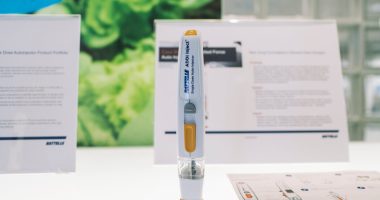
Back in the I.C.U., Glick followed the patient closely. Hours passed, then days, and though his blood pressure was better, it remained too low. Why? Glick sent test tube after test tube to the lab, looking for signs of infection, inflammation, autoimmune disorders — everything she could think of. After the man’s near-death experience, Glick knew that many of his lab results would be abnormal. His liver was damaged, his kidneys, his heart. Her job was to identify which abnormalities were a result of his rapid deterioration and which were the cause.
Aberrant results streamed in, but only one surprised the resident. The man’s thyroid wasn’t making its essential hormone. The thyroid is like the carburetor in an old internal-combustion engine. It tells the body when to rev up and when to slow down. Right now the man’s body needed to be fully revved up, but without this hormone, it couldn’t do it. Before giving the man replacement hormones, Savarimuthu reminded Glick they had to recheck his cortisol level. They had checked it when he arrived, and it was high — as expected, given the physiological stress he was under. But administering thyroid hormone to someone who is cortisol-deficient is like jump-starting a car that has no oil in the engine. You could ruin the whole machine. So Glick sent off a second cortisol-level test. This time, the level was undetectable. She checked again: undetectable.
The Steroid Test
A different test revealed the cause: His adrenal glands, where cortisol is made, weren’t working at all, just like his thyroid gland. She started the man on steroids — an artificial form of cortisol — along with thyroid hormone, and consulted the endocrine team. She then reviewed the records from Westerly, where she saw, buried deep in his chart, that he had been given steroids there. Because he wasn’t deficient when he arrived, and they hadn’t mentioned the steroids in their notes, Glick hadn’t administered them at Yale New Haven. She now turned to the medical literature to figure out just what might have caused these devastating twin hormone deficiencies.
It didn’t take long to determine that he must have autoimmune polyglandular syndrome Type 2. In this rare disorder, the immune system suddenly and mistakenly starts to attack parts of the patient’s own body — in this case, the thyroid gland and the adrenal glands. Why this happens is not well understood. A few hours after getting both replacement hormones, the young man was well enough to begin tapering the medications sustaining his blood pressure. A couple of days later, he was well enough to leave the I.C.U. Ten days later, he was able to go home.
Once the patient understood what he had and started to feel the benefit of the treatment, he realized he’d been sick long before that mint went down wrong. He will have to take these hormones for the rest of his life, but he feels better than he has for years. No one can be certain exactly when his glands were destroyed; it was probably long ago. “I’m not a guy who goes to the doctor,” he admitted. He thought he was just getting old: “You know what they say — after 30, it’s all downhill.” But not anymore. Not for him, anyway.
Lisa Sanders, M.D., is a contributing writer for the magazine. Her latest book is “Diagnosis: Solving the Most Baffling Medical Mysteries.” If you have a solved case to share with Dr. Sanders, write her at Lisa.Sandersmd@gmail.com.
Source: NYT







